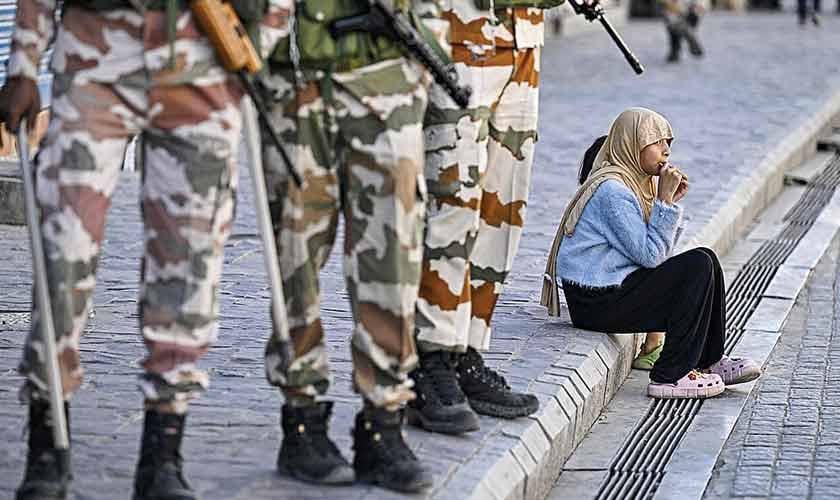Before addressing the developments in Ladakh over the past few weeks, let me begin with news from another part of India — Bihar.
After months of public protests, opposition campaigns in the streets, debates in parliament, and even Supreme Court intervention, the Election Commission of India has declared more than five million people (some reports put the number as high as 6.8 million) ineligible to vote. This ruling comes through its ongoing Special Intensive Revision of electoral rolls.
According to one report, in one constituency nearly 45 percent of the votes struck off the rolls are Muslims and about 20 percent belong to Other Backward Castes. This has not only confirmed the worst fears of the opposition, which has traditionally depended on these communities for electoral support, but, critically, deepened the anxieties of the communities themselves, who see it as a step toward stripping them of their citizenship rights.
There is now growing talk that this intervention may be replicated in other states, especially those governed by parties opposed to the BJP.
—
Developments in Ladakh over the past few weeks represent the proverbial other side of the coin.
The region has long been a critical buffer zone between China and India. It is known not just for its scenic beauty but also for deadly skirmishes between Chinese and Indian armies. Most people in the region wish to remain part of India; many have even welcomed the abrogation of Article 370, which had kept them tied to the state of Jammu and Kashmir.
However, Ladakh is now being turned into another conflict zone.
Like Muslims in Kashmir, the Buddhists in Ladakh are now being labelled as anti-national simply because they demand autonomy and representation in local affairs. This demand is backed by both the Buddhists of Leh and the Muslims of Kargil, largely tribal communities seeking inclusion under the Sixth Schedule of the Indian Constitution.
The Sixth Schedule provides for Autonomous District Councils — a safeguard already extended to other vulnerable communities in India, such as those in Karbi Anglong, Assam. The key concern is to ensure local participation in decision-making about land, resources, and development.
—
The ongoing agitation is not only about demands for statehood and constitutional safeguards like Sixth Schedule protection but is also tied to environmental anxieties.
Ladakh’s fragile ecosystem is highly vulnerable to the pressures of large-scale industrialisation, infrastructure expansion, and resource extraction, which have accelerated since the region became a Union Territory in 2019.
Recent proposals for mineral extraction, including rare earths, raise fears of ecological damage, land degradation, and displacement of pastoral communities. There are also plans for hydropower projects that threaten river systems like the Indus and its tributaries, with potential impacts on agriculture, biodiversity, and water security.
Local pastoralist and agro-based communities fear losing control over grazing lands, forests, and water resources to outside corporate and government interests.
—
Ladakh is now turning into another war zone.
Like Muslims in Kashmir, the Buddhists in Ladakh are increasingly being labelled anti-national. Ironically, their Gandhian scientist-innovator leader, Sonam Wangchuk — who once praised Prime Minister Modi’s decision to make Ladakh a Union Territory (without a legislature) in the hope that locals would finally have their say — soon became an example for expressing this desire.
Wangchuk’s long march to Delhi last year, which was halted at the boundary of the capital, and his repeated peaceful hunger strikes encouraged a government already determined to change the federal character of the country.
To achieve this objective, the government has launched a rampage — sponsoring films like *The Kashmir Files* and *The Kerala Story*, labelling opposition-ruled states as enemy territories, taking direct action against political leaders, and even imprisoning them.
—
What Wangchuk did not realise was that when the government dismantled Jammu and Kashmir, it did not merely seek a strong unitary state reminiscent of Indira Gandhi’s era. The unitary state vision of the Modi-led BJP stems from an ideological position of a strong Hindu state.
This Hindu state counts even Hindus who don’t align with its vision of a unified Hindu Rashtra among its enemies. In their scheme of things, Buddhists are considered a minority religion.
While conspiracy theories are being circulated about foreign involvement in the recent violent turn of the longstanding peaceful agitation — which tragically led to four deaths — a repeat of the government’s perfected practice to crush peaceful mass movements is clearly discernible.
—
In 2019-20, with the enactment of the discriminatory Citizenship Amendment Act (CAA), large masses of people, led by Muslim women and young students, took to the streets across India to protest the law.
Despite government attempts to sideline the issue, the protests persisted. Then followed engineered riots in parts of Delhi that led to killings, after which the government moved swiftly to crush the protests, arresting youth and student leaders. Many remain behind bars under draconian anti-terror laws.
—
Now, focusing back on Ladakh:
Ladakhis have been peacefully agitating for more than two years. The government created a body to engage them in talks, but nothing substantive has come of it.
As the movement grew stronger despite two years of dismissive indifference by the Union government, it was only a matter of time before the government resorted to its tried-and-tested formula.
When the movement turned violent — inexplicably to many, some calling it engineered by the Gen Z — the police moved in and accused Sonam Wangchuk of being the conspirator behind it.
The state did not stop there. It deployed its next weapon, accusing Wangchuk’s NGO, SECMOL, of threatening India’s sovereignty. The following day, Wangchuk was arrested under the National Security Act and sent to Jodhpur.
—
It is now clear that when the Hindutva-driven state defines India as a nation, it does not see its living, breathing people as part of it.
All it seems to see are barren stretches of land, sketched on maps hanging in countless classrooms across the country.
https://www.thenews.com.pk/tns/detail/1348330-himalayan-flashpoint


